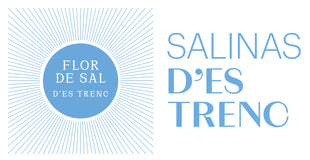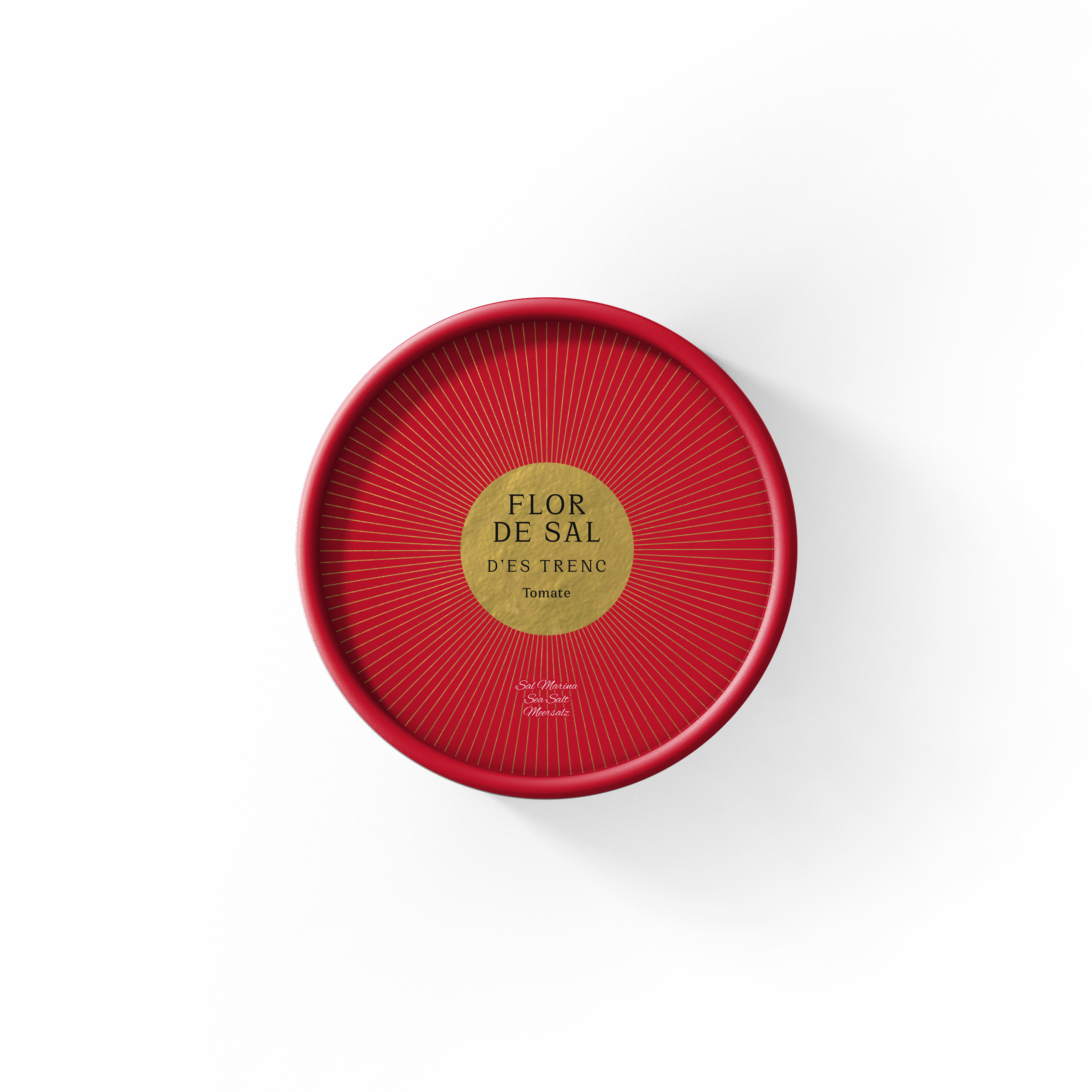
Flor de Sal d'Es Trenc Saffron
The latest Limited Edition from the Salinas d'Es Trenc
Flor de Sal d'Es Trenc is also known as the white gold of the Balearic Islands and enjoys great popularity worldwide. It is formed under optimal conditions in the interaction of wind and sun as a thin skin in the basins of the Salinas d'Es Trenc. Harvested by hand in the traditional way and dried under the sun of Mallorca, the salt flower impresses with its crispy texture, its richness in minerals and a mild taste that refines almost all dishes in a delicious way.
The newest spice salt mixture from the Majorcan salt works is Flor de Sal d'Es Trenc Saffron. Saffron is one of the oldest spices of mankind and is used in various cultures and civilisations. A descendant of the plant genus Crocus Sativus, its spectacular beauty results from the characteristic purple of its petals and the intense red of its threads. Inside the flower there are three yellow stamens and a white thread, the style divided into three red strands or stigmas: the saffron threads, which are later used as a spice. In the finest manual work, the strands are de-marked and subjected to a dehydration process.
In this special limited edition, Salinas d'Es Trenc combines two of the most symbolic ingredients in the history of mankind: salt, also known as "white gold" since ancient times, and saffron, the "red gold".

The saffron used to make Flor de Sal d'Es Trenc saffron is produced in Herat, located on the old trade routes of the Middle East, in western Afghanistan. The saffron is produced by Talay Sorkh, a social enterprise dedicated to the ethical production of high quality saffron. Talay's network of farmers extends to over 200 farmers, who support an average of 7 household members with a living wage. The production of saffron is of great importance to the women's community as the production process ensures their labour and social integration.
Saffron is an excellent flavour carrier and completes every dish with its fragrant aroma and reddish colour. Besides its culinary component, saffron is also said to have a calming and aphrodisiacal effect. Saffron is found in a variety of Mediterranean recipes, especially as a supplement to rice, and is also frequently used in Asia.
The dosage of saffron requires a special sensitivity, as it is a very aromatic spice. For this reason we have paid special attention to the mixing ratio of Flor de Sal and saffron in our new Limited Edition Flor de Sal d'Es Trenc Saffron. Due to this special care the saffron taste integrates even better into the dishes and spreads perfectly with the other ingredients.
In the Mediterranean diet, saffron can be found in a variety of recipes. In Spain it is often used for rice, in France for making bouillabaisse and in Italy for risotto a la Milanesa, which is given a red colour by saffron. In Asia it is used for desserts and in Japan to improve the taste of fish.

This special limited edition from the Salinas d'Es Trenc was created in collaboration with the Ethical Fashion Initiative. The Ethical Fashion Initiative is a programme of the International Trade Centre, a technical agency of the United Nations, which focuses on creating supply chains and developing market links for food and fashion artisans around the world. In Afghanistan, where its work is supported by the European Union, the mission of the Ethical Fashion Initiative is to create sustainable livelihoods through trade for more than 2,000 returnees, internally displaced persons, potential displaced persons, farmers and marginalized artisans by 2020.







